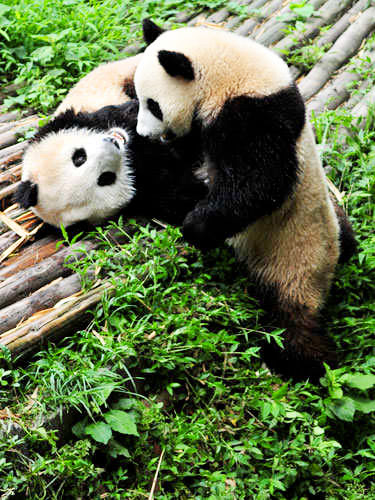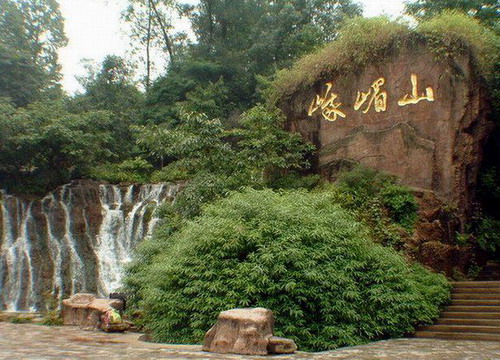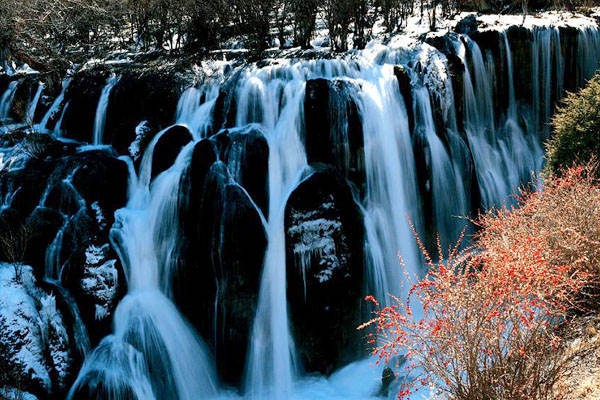Panda Base

In 1987, the Chengdu Research Base of Giant Panda Breeding (Research Base) was established on Futou Shan, an almost barren hill, where the soil was poor and not suitable for farming. This first phase of the project only covered an area of 5.5 hectares. Giant pandas and scientists from the Chengdu Zoo form the basis of the giant panda population and staff of the Research Base.
Chengdu Research Base of Giant Panda Breeding is situated on the Axe Hill 10 kilometers from the north suburb of Chengdu City. It covers an area of 600 acres. The environment here is exquisitely designed; the air is refreshing with the bamboo growing luxuriantly and flocks of wild birds flying around.
Chengdu Research Base of Giant Panda Breeding was developed from farm land into a naturalistic "forest" in the city, covered with big trees such as ginkgos, chinars, yulans, willows and embeded with high dense bamboo and grasses. When you visit here, you will feel as if you are visiting real panda habitat. All the enclosures for our pandas are quite different from traditional exhibits. To incorporate all of the pandas basic needs, the enriched yards provide a full range of vegetation including trees, bushes and grasses, a water pool, moats and rock-shaped bedrooms as a shelter. The pandas also have wooden structures to climb on, which provide visitors wonderful viewing opportunities as well. Some of the yards have extra enrichment like large rocks, swings and slides which are especially used by young pandas. For most of the year, adult pandas use only a small part of their yards (often close to their bedroom) except during breeding season when they might be found scent marking throughout their territories. Subadults use the yard more effectively. They explore most of their yard, sometimes with their mother, with peers or by themselves. All pandas are likely to stay inside during summer-time to avoid high tempratures, so it is hard for visitors to see them unless you come early in the morning around 8:00am. However, you can see red pandas in their trees throughout the year. You can also enjoy viewing large birds such as peacocks and pheasants free-ranging thoughout the grounds, and swans and mallard ducks freely swimming on Swan Lake. You can also visit endangered birds such as black-necked cranes and white storks at their exhibits, which are the simple but full of lush grasses. Thrushes, cuckoos, kingfishers and egrets are always available to see in thickets and on Swan Lake if you are observant. Spring is breeding season, and in this flowering time, chirping birds are busy with their nest building. Pandas and red pandas are exhibiting breeding behavior in their enriched yards. Some behaviors to look for are scent marking on rocks, trees and ground, water play, dirt bathing, and rolling on the dirt. The most memorable experience you may have is a mother panda playing with her several-month old babies. In the fall, new born babies will enter our world which you can see at the nursery house from August through the end of the year.




